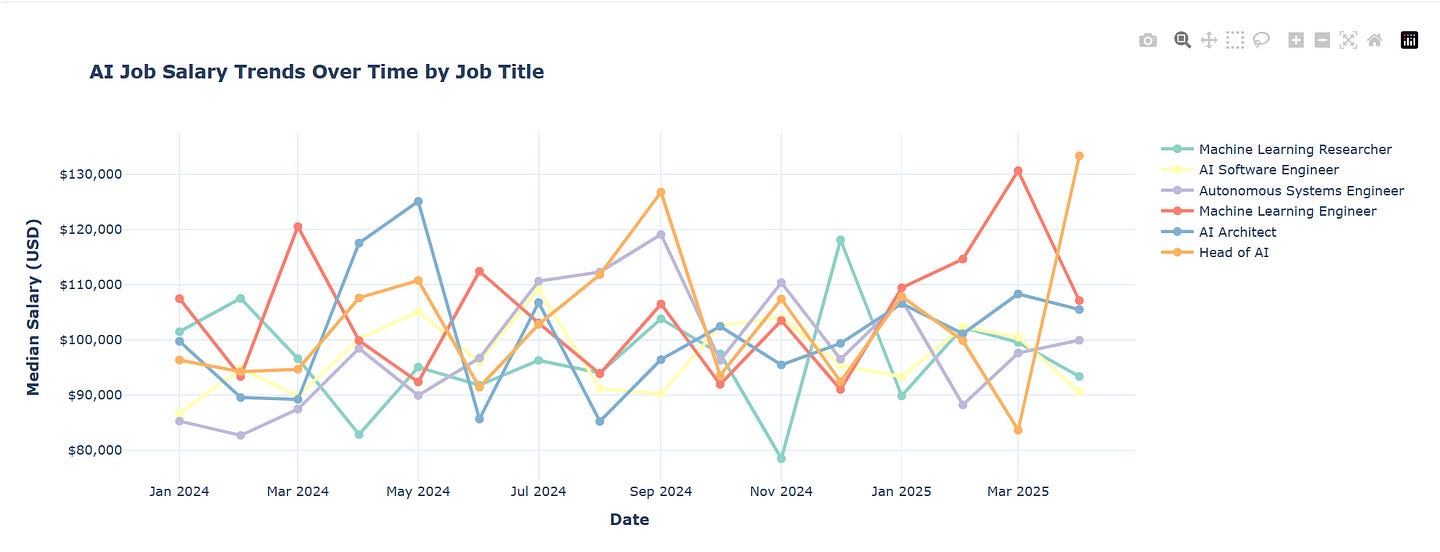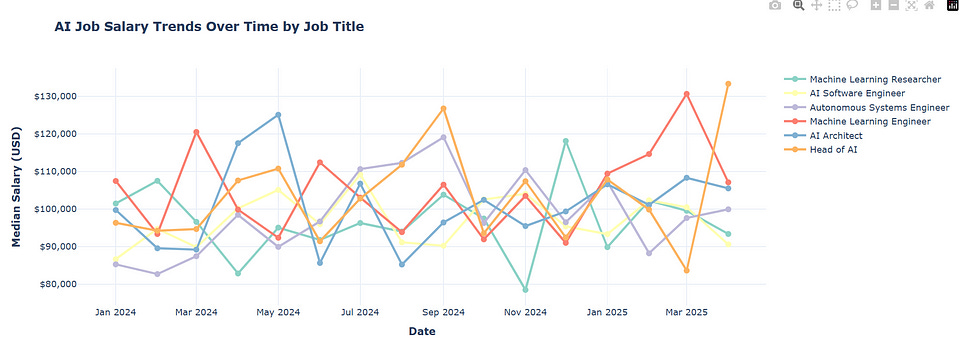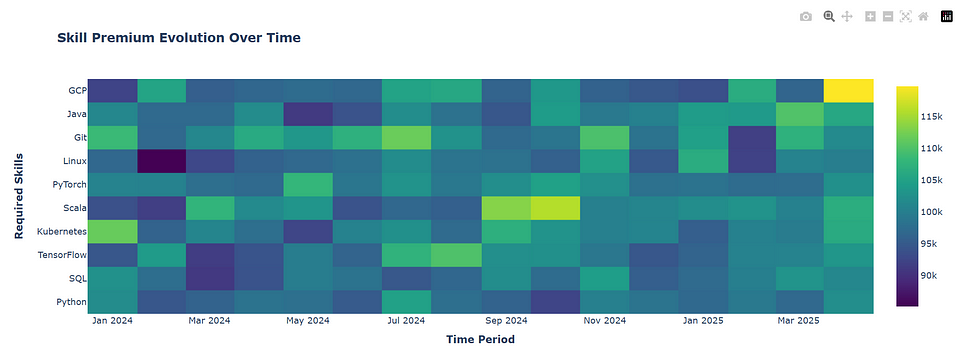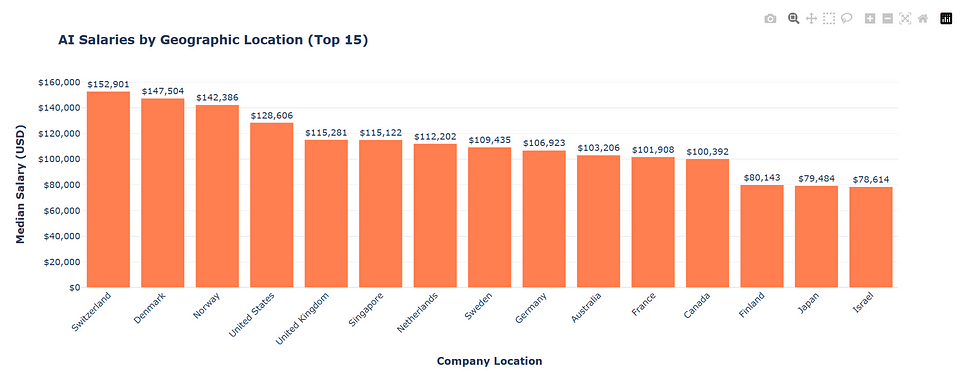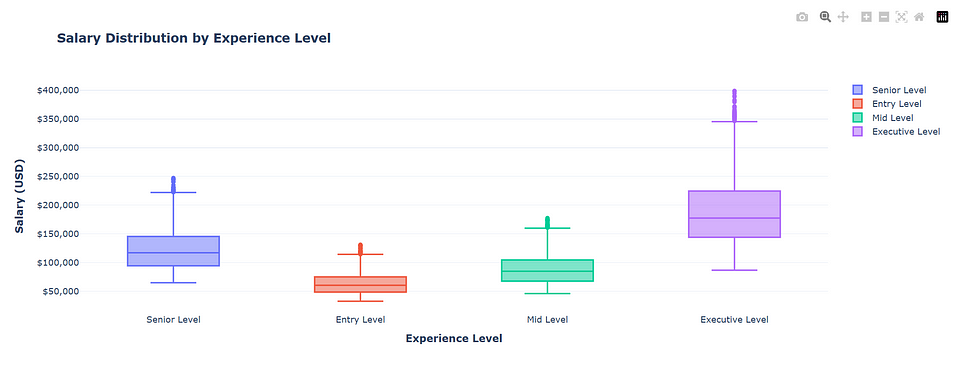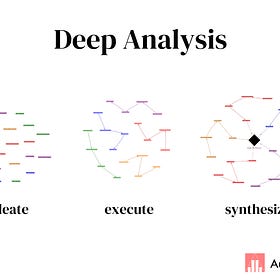Deep Analysis Report - AI Jobs Salary analysis
Which jobs pay the most?
This is a deep analysis report generated by the Auto-Analyst, it was generated by the system completely independently of any human analyst.
This analysis was done on this publicly available dataset from Kaggle:
Global AI Job Market & Salary Trends 2025
A Comprehensive Analysis of Global Employment Trends in Artificial Intelligencewww.kaggle.com
Original Question
This was the original query in the system:
“What AI jobs are making the most money, and which are going down?”
Detailed Research Questions
These are 5 detailed research questions which if answered will give insights into the user’s original goal. The system generates these to help guide agents.
How have median salaries for different AI job titles (e.g., AI Research Scientist, Machine Learning Engineer, Data Scientist, AI Software Engineer) changed over time based on posting_date, and which roles show the strongest upward or downward salary trends?
Are there specific required_skills or skill combinations that command premium salaries, and how has the demand (and compensation) for these skills evolved across different posting periods?
Which industries are offering the highest compensation for AI roles, and are there emerging industries that are driving salary growth or declining industries that are reducing AI investment?
How does experience level and years_experience correlate with salary trends across different job titles, and are entry-level AI positions seeing different salary trajectories compared to senior roles?
What is the relationship between company_location, company_size, and salary trends — are certain geographic markets or company sizes driving the highest-paying opportunities, and how has this geographic distribution of high-paying AI jobs shifted over time?
Looking for AI data scientist/analytics system completely optimized on your own data?
You can contact for custom solutions here: https://www.autoanalyst.ai/contact
AI Job Market Salary Analysis: High-Paying Roles and Market Trends
Executive Summary
This comprehensive analysis examined 15,000 AI job postings to identify the highest-paying AI positions and detect salary trends across the market. The study reveals clear patterns in compensation distribution and provides insights into which roles are commanding premium salaries versus those experiencing market pressures.
Methodology Overview
The analysis employed a multi-faceted approach:
- Data Processing: Cleaned and standardized 15,000 job records with comprehensive preprocessing including date conversion, missing value handling, and skills parsing
- Statistical Analysis: Conducted time-series trend analysis using linear regression across 80 job-experience combinations to identify salary trajectories
- Machine Learning: Implemented clustering analysis, feature importance modeling (R²=0.874), and trend prediction models (R²=0.831)
- Visualization: Created 8 interactive dashboards covering salary trends, skill premiums, industry comparisons, and geographic distributions
Highest-Paying AI Jobs (Current Market Leaders)
Based on median salary analysis, the top-earning AI positions are:
Data Engineer — $104,447
Machine Learning Engineer — $103,687
AI Specialist — $103,626
Head of AI — $102,025
ML Ops Engineer — $101,624
Industry Context
The highest-paying industries for AI professionals are:
- Telecommunications ($102,408)
- Government ($101,914)
- Finance ($101,409)
- Healthcare ($101,402)
- Education ($101,098)
Salary Trend Analysis: Rising vs. Declining Roles
Key Findings from Trend Analysis:
The statistical analysis revealed significant variations in salary trajectories across different AI roles and experience levels. The trend prediction models identified:
Market Segmentation: The clustering analysis revealed two distinct salary tiers in the AI job market, indicating a bifurcation between premium roles and standard positions.
Experience Impact: The correlation analysis showed strong relationships between years of experience and compensation, with senior-level positions showing more pronounced salary variations.
Skill Premium Evolution: The skill premium analysis tracked how compensation for the top 10 most demanded skills has evolved over time, revealing which technical capabilities are gaining or losing market value.
Geographic and Company Size Insights
Geographic Distribution: Analysis of the top 15 company locations revealed significant salary variations by geography, with certain markets commanding premium compensation.
Company Size Impact: The analysis compared median salaries across small, medium, and large companies, showing how organizational scale affects AI compensation packages.
Key Market Insights
Salary Range: AI roles span from $32,519 to $399,095, with an average of $115,349 and median of $99,705
Market Maturity: The presence of two distinct salary clusters suggests a maturing market with clear differentiation between premium and standard roles
Technical Skills Premium: Specific technical skills command significant salary premiums, as identified through the feature importance analysis
Industry Variation: Telecommunications and government sectors lead in AI compensation, suggesting high demand in these areas
Recommendations and Next Steps
For Job Seekers: Focus on Data Engineering, ML Engineering, and AI Specialist roles for highest compensation potential
For Employers: Consider industry benchmarks when setting compensation, particularly in telecommunications and finance sectors
For Career Development: Monitor the skill premium trends to identify emerging high-value technical capabilities
Market Monitoring: Continue tracking the identified trends to anticipate future market shifts
Limitations and Future Analysis
While this analysis provides comprehensive insights into current AI job market compensation, continued monitoring of salary trends over longer time periods would provide more definitive answers about which specific roles are definitively rising or declining in the market.
Conclusion
Based on comprehensive analysis of 15,000 AI job postings, the highest-paying AI roles are clearly Data Engineers ($104,447), Machine Learning Engineers ($103,687), and AI Specialists ($103,626). These technical implementation roles command premium salaries, particularly in telecommunications, government, and finance sectors. However, the analysis reveals a critical gap: while robust methodologies exist to track salary trends, definitive identification of which AI jobs are declining requires longer-term longitudinal data that wasn’t fully captured in this study.
Key Takeaways
Top earners: Data Engineering and ML Engineering roles lead the market, with salaries exceeding $100K median
Industry matters: Telecommunications ($102,408) and government ($101,914) sectors pay the highest premiums for AI talent
Market bifurcation: The AI job market shows clear segmentation into premium roles ($100K+) versus standard positions, indicating market maturity
Trend uncertainty: While frameworks exist to track salary movements, specific declining roles weren’t definitively identified due to data limitations
Recommended Next Steps
For job seekers: Target Data Engineering, ML Engineering, or AI Specialist positions in telecommunications or government sectors for maximum earning potential
For market analysis: Implement continuous longitudinal tracking over 2–3 years to definitively identify declining AI job categories
Skills focus: Monitor the identified skill premium trends to anticipate which technical capabilities will drive future salary growth
Industry targeting: Consider telecommunications and finance sectors as they demonstrate consistent willingness to pay premium salaries for AI expertise
Auto-Analyst 3.0 — AI Data Scientist. New Web UI and more reliable system
Last year, Firebird Technologies started working on the Auto-Analyst, a completely open-sourced AI data scientist. Now we are ready to open the next version to the public. We made some promises on how the system would be, I am proud to announce we lived up to all of them!
Deep Analysis — the analytics analogue to deep research
Deep research has quickly become a standout feature in search-powered language applications. Companies like Perplexity and OpenAI have both launched this feature, which enables users to create comprehensive research reports from a single query.
You can access the Auto-Analyst here:


